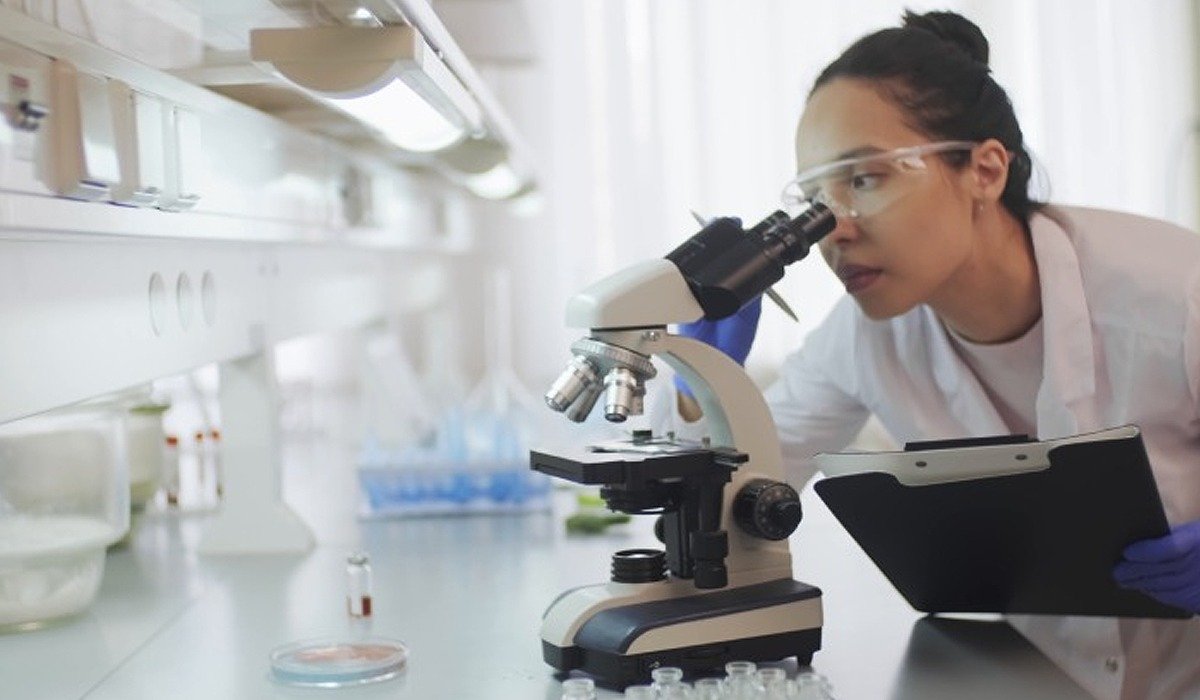

Order a call
 24.05.2023
24.05.2023
The center's range of activities is wide and is an important part of the healthcare system.
Every year a huge amount of children's toys, household chemicals, polymer materials, and cosmetics are imported into Kazakhstan. However, not all of them meet the requirements of chemical, toxicological, and radiation safety. The National Center of Expertise protects Kazakhstanis from low-quality and unsafe products, where, in addition to the above, they examine food products, as well as water, air and soil. Chairman of the Board of the National Center of Expertise Erlan Kiyasov spoke about the important and much-needed work in an interview with Azattyq Rýhy .
– Erlan Ansaganovich, tell us about the activities of the National Center of Expertise. As far as we know, it is a large laboratory network where many processes and procedures are carried out to obtain the most accurate results?
– Yes, the range of activities of the National Center of Expertise is wide and is an important part of the healthcare system. One of the main tasks of our service is to ensure the sanitary and epidemiological well-being of the population. In a word, this is not an easy job, which, in addition to high professionalism, requires perseverance and patience.
Today we have 19 regional branches, 176 city and district branches, as well as 4 disinfection centers. Each regional branch has 6 laboratories and disinfection departments - sanitary and hygienic, bacteriological, virological, radiological laboratories, laboratories of especially dangerous infections and high-tech research. Each of them performs its tasks in accordance with their specifics and area of activity. Laboratories operate in accordance with international standards and regulations to ensure accuracy and reliability of results. They use modern methods and technologies for analysis.

We study food products, as well as water, air and soil. Our competence includes research on children's toys, household chemicals, polymer materials, and cosmetics, which are sold in Kazakhstan. That is, in general, we provide the basics of radiation, chemical, microbiological, toxicological safety in our country.
It is important to note instrumental measurements of electromagnetic radiation from household electrical appliances, measurements of airborne and impact noise levels for the commissioning of residential buildings.
Every month our center conducts about 400 thousand studies. Over the past year, laboratories conducted about 7 million studies.

– As you know, every year new technologies, methods and equipment appear, expanding capabilities and improving research results. How are your laboratories developing, given that this is a continuous process that does not stand still?
– You are right, equipment plays an important role in improving the work of the laboratory. High-quality and modern equipment can increase the efficiency and accuracy of research, reduce time and costs for their implementation, and also expand research capabilities.
Updating equipment allows our laboratories to expand the range of research. New technologies and techniques provide access to new types of analysis and relevant research.
Since 2015, more than 3 thousand pieces of laboratory equipment have been purchased for our laboratories. In 2022, to strengthen the material and technical base of the branch laboratories, 215 units of laboratory equipment were purchased. Thus, new high-precision chromatographs and emission spectrometers for laboratory control in terms of the safety and quality of food and non-food products were supplied to the Karaganda region. Sets of instruments for measuring sound insulation, impact and airborne noise, and gas analyzers for measuring harmful substances in the atmospheric air were purchased in the Akmola and Kyzylorda regions.
To equip the laboratories, equipment is purchased from different countries such as Russia, China, Japan, Germany and the United States of America.
We are always open to innovation in introducing new methods, because they can significantly increase the efficiency and accuracy of research. Since 2015, we have introduced 1,243 laboratory research methods. In 2023, another 85 new techniques are at the implementation stage.
I would like to add that laboratory specialists at the Center are working to introduce the principles and methods of laboratory analysis of the quality of food and non-food products in accordance with international standards. Methods are being developed for the determination of food additives and preservatives, residual amounts of antibiotics, vitamins and allergens in food products, as well as for the determination of harmful substances in non-food products and environmental objects.

– How can you characterize the Center’s activities in the field of virology?
– At the moment, there are 17 virology laboratories operating in the NCE, and it is planned to open two more laboratories on the basis of newly created branches. In the first quarter of 2023, the number of studies conducted under government orders amounted to 149,003.
When examining blood serum samples for viral hepatitis A, 7 positive samples were found in branches in Mangistau (3), West Kazakhstan (4) regions.
In addition, our laboratories tested 15,405 samples from patients diagnosed with ARVI and influenza using the PCR method. The proportion of cases positive for influenza was only 3.8%. This is all the work of our center again. As we said above, our range of activities is wide. For example, this year there is a high incidence of measles, as the number of people examined has increased 5 times. Positive results above the average level were detected in branches in Almaty (73 cases), Turkestan (15 cases), Almaty (8 cases) regions.
– Currently, molecular genetic research methods are becoming increasingly important in the epidemiological surveillance of infectious diseases. Tell us more about them.
– On the basis of the NCE branch in Astana there is a laboratory for molecular genetic research. This is an area of science where sequencing is done for certain types of infections, such as influenza and COVID-19.
Sequencing is a molecular genetic method for studying microorganisms. Using the obtained sequencing results, it is possible to establish the degree of genetic homogeneity/heterogeneity of strains isolated during a local outbreak of an infectious disease. In addition, this method makes it possible to characterize the pathogen population, as well as determine the degree of relatedness of strains isolated in different geographical areas and at different times. And also, which is not unimportant, it is possible to establish the mechanism of formation of pathogen populations during different periods of the epidemic process.

Next, based on the results of molecular epidemiological monitoring, the situation is assessed, decisions are made in a timely manner, after which sanitary and anti-epidemic measures are developed and implemented to prevent the occurrence and spread of infectious diseases.
That is, the task of molecular genetic methods is to quickly respond to outbreaks and assist in epidemiological investigations.
– Erlan Ansaganovich, at the beginning of the interview you said that your center is engaged in water research. Let's look at this issue in a little more detail. How do you study the state of drinking water, and what problems are found in this area?
– I can give you the following figures. As part of monitoring the quality of drinking water in the first quarter of this year, the NCE laboratory service carried out more than 130 thousand sanitary and chemical tests of water, which is 20% more than for the same period in 2022, at the same time, the registration of non-conforming water samples increased by 1.5 times :
The main indicators of water in the regions by which exceeding the permissible concentration are detected are hardness, mineralization, chlorides, sulfates, iron, turbidity, color, nitrates.
In addition to sanitary and chemical studies of water, monitoring is carried out for bacteriological, virological, and radiological indicators of the safety of drinking water.

– What would you like to note at the end of our interview?
– Most recently, the head of the World Health Organization, Tedros Ghebreyesus, announced the end of the COVID-19 emergency regime in force in the world since 2020.
The whole world has been battling a global pandemic for three years. Health workers were the first to bear the brunt of the pandemic.
At that time, among all laboratories, the National Center of Expertise was one of the first to conduct PCR testing to detect coronavirus.
More than 5 thousand studies were carried out in our laboratories per day. Over three years, we have conducted about five million studies to identify coronavirus. Seven days a week, 24 hours a day, almost 500 NCE specialists across the republic were researching tests for COVID-19.
I would like to note the work of our disinfection services, which also carried out disinfection treatment seven days a week, and in the event of an emergency, around the clock in areas of infectious disease.
But do not forget that in addition to COVID-19, there are other viral infections that can also pose a threat to public health. Some of these infections may be chronic, while others may cause epidemics or pandemics. We must learn the lessons of the pandemic and be prepared for new challenges of unknown infections.
– Thank you for the informative conversation and wish you success in this difficult task!